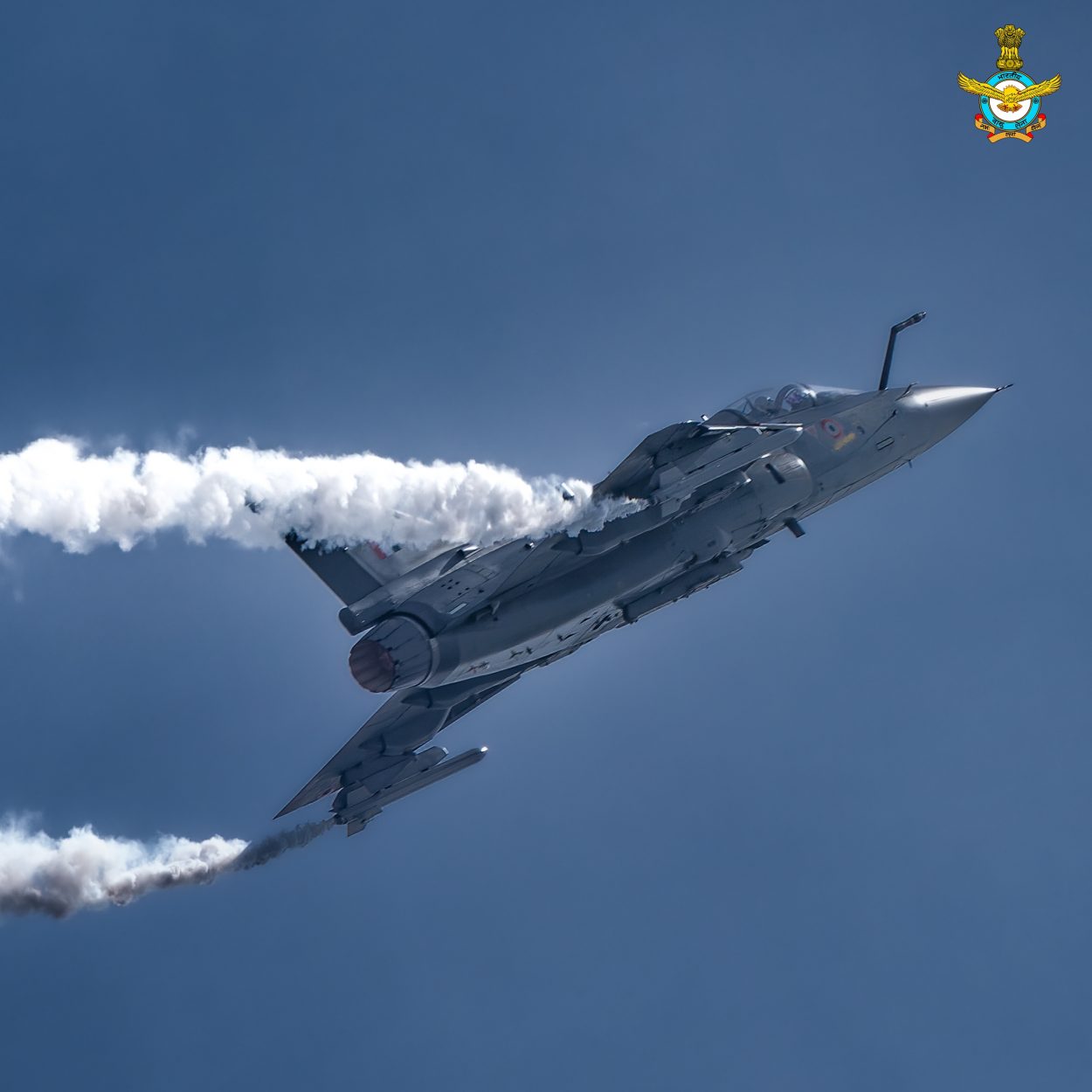The world’s smallest and lightest supersonic fighter jet, LCA ‘Tejas’ (Brilliance), is all set to become deadlier. The feasibility studies have been completed to integrate the Al-Tariq long-range precision-guided munitions (LR-PGMs) on the Indian-made fighter jet.
Al Tariq-LR is a long-range (LR) precision-guided munition (PGM) manufactured by Al Tariq, part of the Weapons and Missiles business of EDGE Group, a state-owned defense conglomerate based in the United Arab Emirates (UAE).
Al Tariq-LR is part of the Al Tariq family of precision munition kits designed to convert unguided aerial munitions into high-precision, smart, longer-range, focused munitions using guidance and propulsion technologies. The Al Tariq family of precision munition kits also includes the standard range precision-guided munition.
The announcement was made on the sidelines of the Dubai Air Show and follows a Memorandum of Understand (MoU) signed earlier this year between Al-Tariq (a Joint Venture between EDGE and South African Denel) and Indian aerospace major Hindustan Aeronautics Limited (HAL).
The MoU aimed to integrate the AL TARIQ LR-PGM onto the HAL Tejas LCA and other platforms as part of their campaign to offer a long-range precision weapon solution to the region.
Theunis Botha, CEO of Al Tariq, said: “We are proud to be associated with HAL in this strategic campaign to offer high technology solutions to the Tejas customers in the region. We look forward to presenting the range of AL TARIQ’s mission-proven long-range precision-guided munitions to HAL Tejas customers around the globe.”
The AL TARIQ family of modular, all-weather, day/night LR-PGMs are designed to fit onto the Mark 80 series and the Indian-designed High-Speed Low Drag (HSLD) series of aerial munitions. Adding a wing kit converts the AL TARIQ-S (Standard Range) to the AL TARIQ-LR (Long Range), extending the stand-off range from 45km to 120km.
Full integration and qualification of AL TARIQ’s LR-PGMs on HAL’s Tejas LCA is expected to be completed in the third quarter of 2024.
From Design Board To India’s Frontline Fighter Jet
As the curtains draw on the Indian Air Force’s (IAF) fleet of MiG-21s, the LCA Tejas will be more prominent in defending the Indian air space. The IAF has deployed LCA Mk-1 at the Sulur air base in South India. However, in 2023, the IAF deployed one squadron of its indigenous combat jets in the Kashmir Valley, a base responsible for defending the border along Pakistan.
Moving LCA Tejas to forward bases aims to help it gain experience in flying in the valley and other operations. The deployment to forward bases indicates the growing confidence of the IAF in the aircraft. It allows the units to test their maintenance procedures, turnaround rate, and aircraft availability, which will be helpful in case of conflict.
An official told the EurAsian Times: “These detachments are happening nationwide, particularly in the forward air bases. These detachments are to familiarise pilots and the ground staff about operations from these air bases and to provide them experience operating from these locations, with an eye on likely future permanent deployment.”
Recent media reports indicated that an LCA-Mk 1 squadron based at Sulur in Tamil Nadu will be relocated to a frontline fighter base in Gujarat. The first LCA Mk-1A squadron will be raised at an air base in Rajasthan. LCA Mk-1A is an advanced variant of LCA Mk-1.
In 2021, the IAF signed a US$ 6.5 billion deal for 83 Tejas MK1A. In 2023, the force has indicated that it will soon place an order for additional LCA MK1A. The IAF’s Tejas fighters have a variety of strike weapons and air-to-air weaponry, including Russia R-73, Israeli Python, and Derby missiles. Future integrations will allow the Tejas to carry weapons like the ASRAAM, Indian Astra beyond visual range missile, and the Russian R-77.

India’s air force is all set to begin induction of the 83 LCA Mk1A variant, produced by the state-run lone aircraft maker HAL, in the first quarter of 2024. HAL is expected to complete the deliveries of the 83 LCA Mk1A variants, including ten trainers, by 2029. In 2024, HAL will deliver three aircraft and follow them up with 16 aircraft deliveries from 2025 through two production lines.
Ultimately, HAL plans to produce 24 LCA Mk1s annually from its facility in Bengaluru, for which a third production line that can manufacture eight aircraft a year is being set up at the facility.
The IAF is expected to order more than 100 Mk-2s, and the aircraft will be ready for production in five years. American engine maker GE’s F-414 engines will power them. F-414 has evolved from the F-404 engine that powers the existing LCA variants. The deal was signed in early 2023 during Prime Minister Narendra Modi’s visit to the US.
The production of the engines in India will result in the new fighter jet having an indigenous content of around 75 percent compared to 55-60% in LCA Mk-1A and 50% in the existing Mk-1 variant.
- Ritu Sharma has been a journalist for over a decade, writing on defense, foreign affairs, and nuclear technology. Article Republished
- She can be reached at ritu.sharma (at) mail.com
- Follow EurAsian Times on Google News




